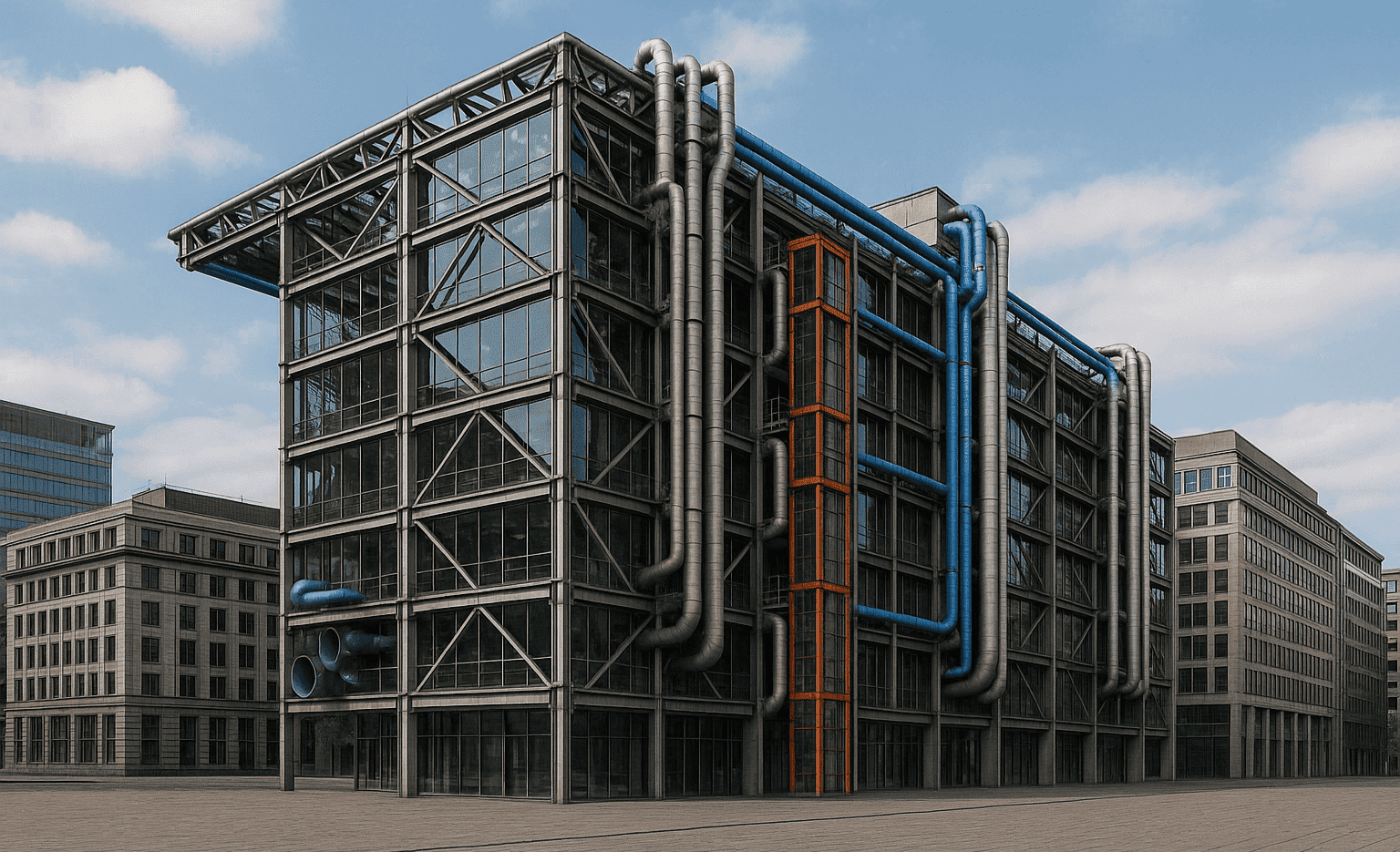Today, the rapid evolution of technology and digitalization has reshaped society. What once seemed unimaginable is now reality—we live in a world deeply driven by technology. This transformation touches every sector: health, education, industry, food, and more. Architecture, too, has advanced progressively, giving rise to new trends where structural elements, facilities, enclosures, and construction systems take center stage. This movement is known as High-Tech architecture.
Definition
Emerging in the 1970s, this style fused architecture with advanced technology to create an industrial aesthetic. High-Tech architecture integrates industry-grade materials and systems, particularly in the design of roofs, walls, and floors, making technology an inseparable part of the visual identity of a building. This movement set itself apart from modern architecture by highlighting construction elements as the focal point of design—features like staircases, elevators, lighting systems, steel structures, and glass became the true protagonists of the buildings.
Characteristics
The characteristics of High-Tech architecture have evolved over time and include the following:
Prominent use and display of industrialized materials—such as glass and steel walls—making materials the main protagonists of the style.
Originating from late modernism, with strong influence from rationalist architecture.
In interior design, everyday industrial objects are repurposed—for instance, containers used as vases for flowers.
It draws inspiration from modern architecture but reshapes its own identity in line with contemporary trends.
Building façades often feature a metallic, shiny appearance.
Foundations
The foundation of High-Tech architecture lies in the use of technological materials for both structural and detailed elements. Glass, stainless steel, and similar materials are integrated with building systems—considering lighting, walls, roofs, floors, and more—so that technology becomes an essential part of design.
Technological evolution drives continuous research and exploration of new materials—such as steel, polycarbonate, aluminum, and glass—and their applications, thereby fostering ongoing technological advancement.
